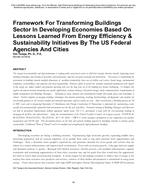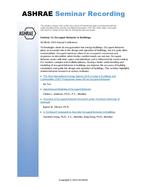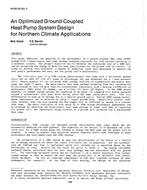A series of eight calibrated hot box experimental tests were completed to determine the impact of natural convection in belowgrade open cell concrete block walls. The thermal boundary conditions associated with the exterior soil were included by usinga tapered layer of insulation. Once the tests were completed with the open cells they were then filled with sand to eliminate anyconvection affects and retested. The key challenge was to investigate the 38% over-prediction of the R-value of walls insulatedonly on the top half by the arc-length method. The results were intended to be used to further develop a simplified analytical modelthat can estimate the energy savings with various insulation strategies on the interior or exterior at full depth or partial depths.Key findings were that the heat transfer in the hollow cores is extremely complex and driven primarily by natural convection butalso includes radiation and conduction through the webs and shell faces of the concrete blocks. Natural convection was identifiedas the major driving force. The results did not lead to any new modeling procedures or correlations that would improve the arclength model. Future modeling improvements will need to focus on a thermal network that simultaneously accounts for all of theheat transfer mechanisms.
Presented at Thermal Performance of Exterior Envelopes of Whole Buildings XII, December 2013
Citation: Thermal Performance of Exterior Envelopes of Whole Buildings XII
Product Details
- Published:
- 2013
- Number of Pages:
- 7
- File Size:
- 1 file , 2.2 MB
- Product Code(s):
- D-BldConf13-53


